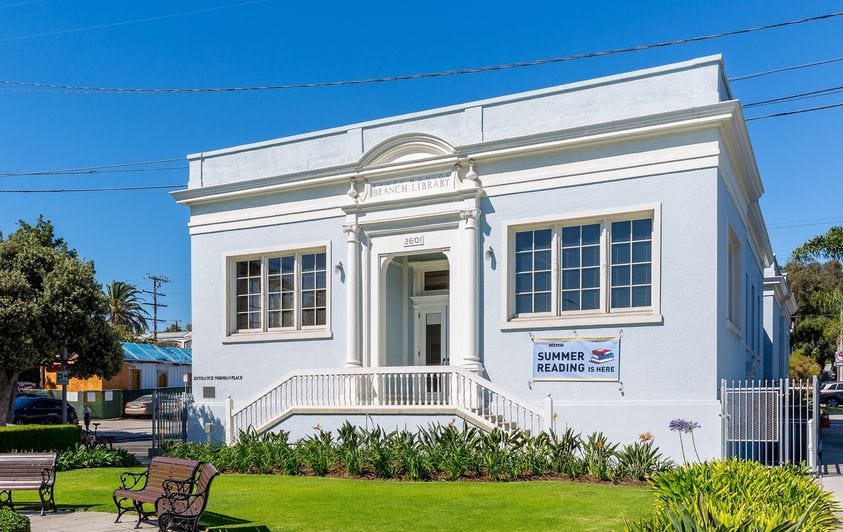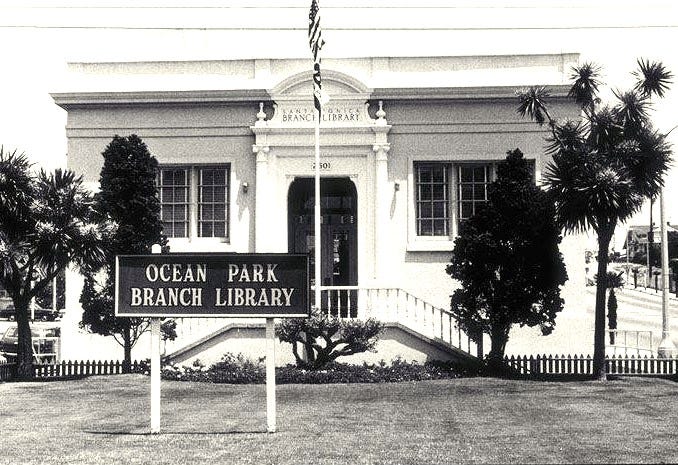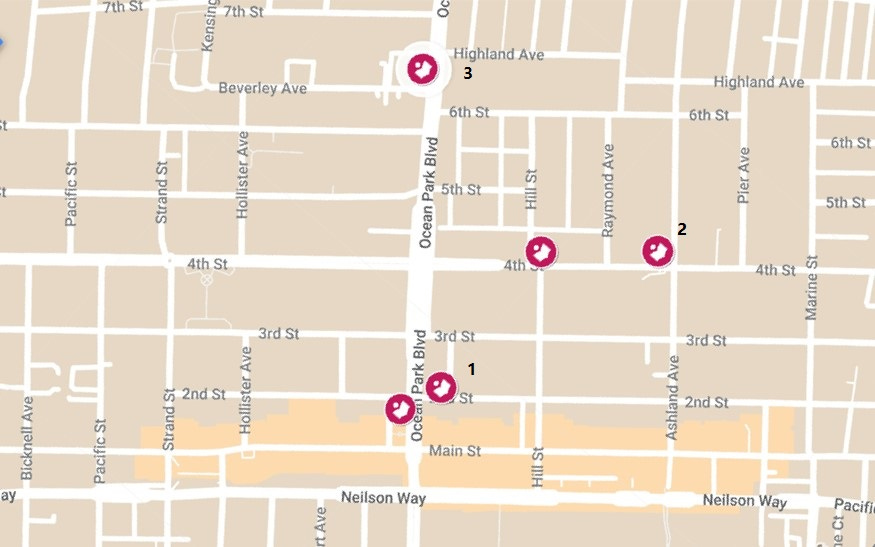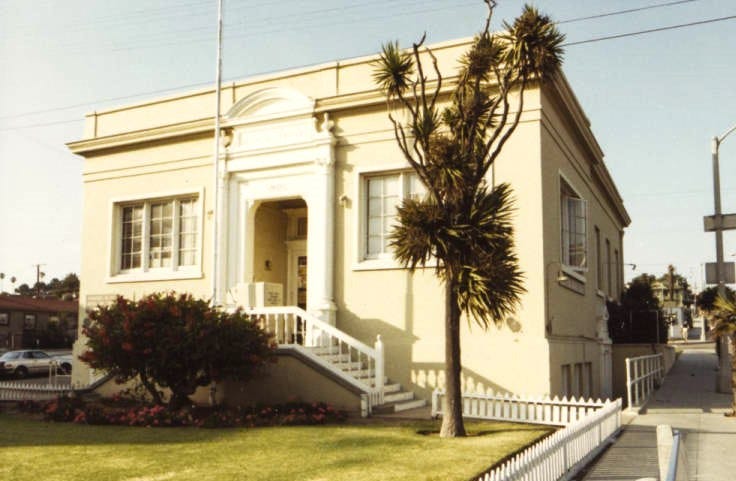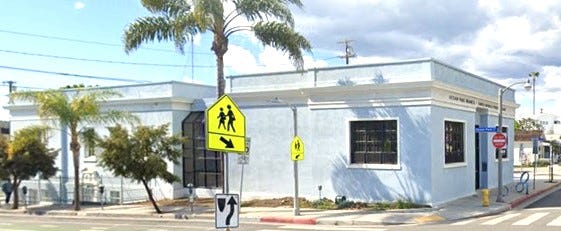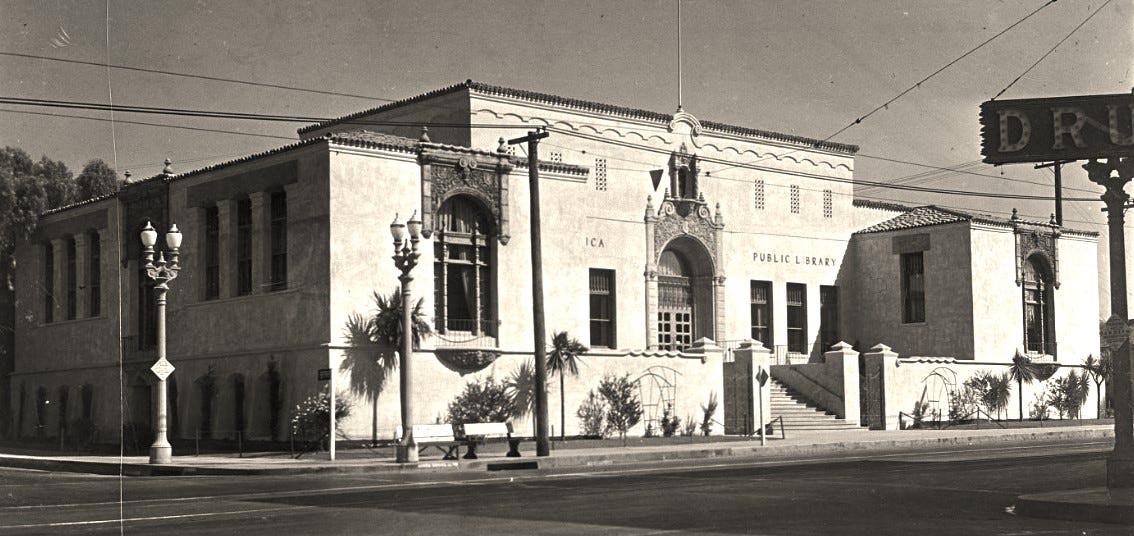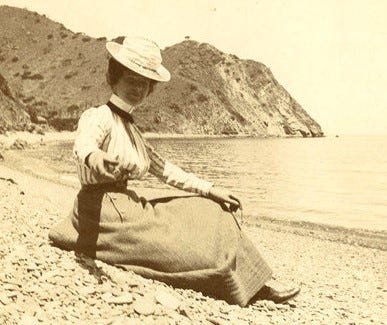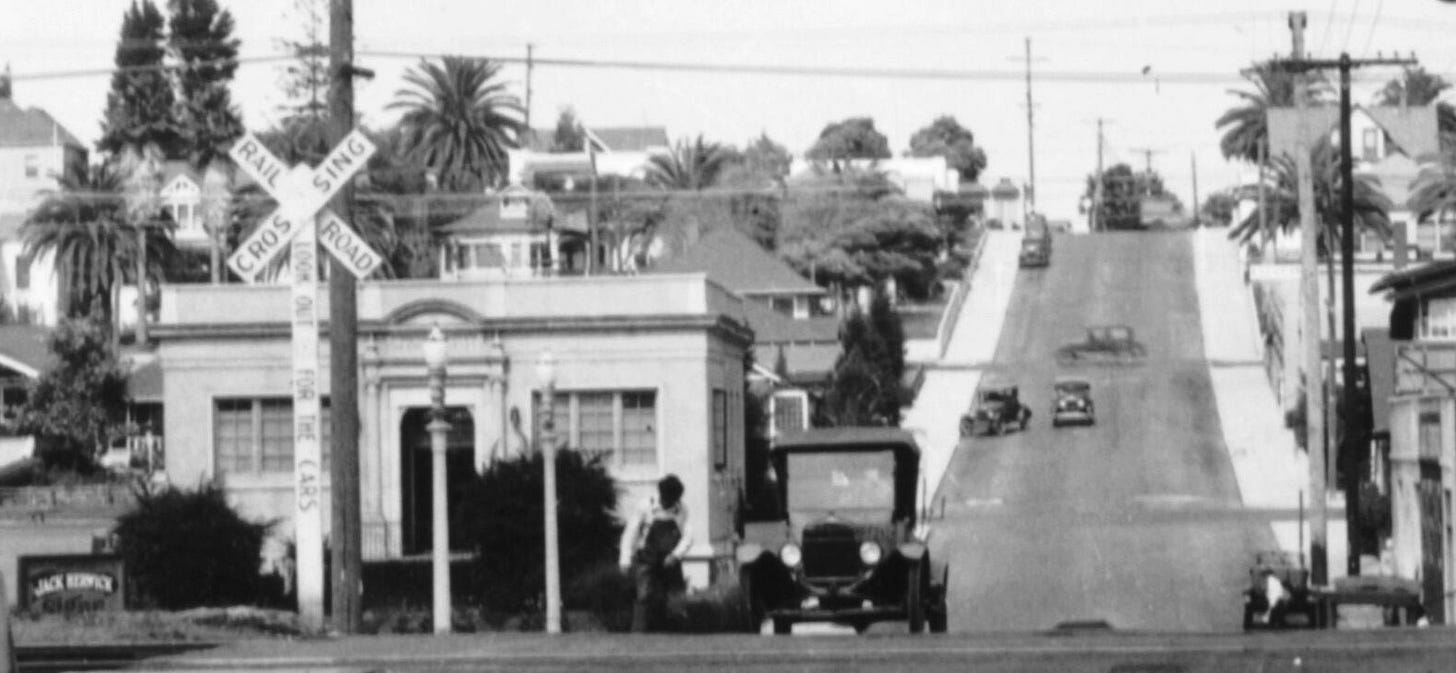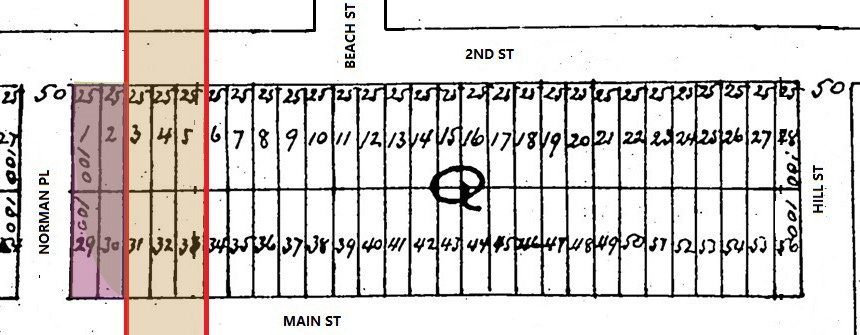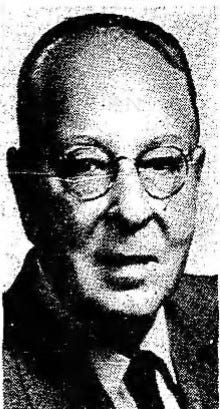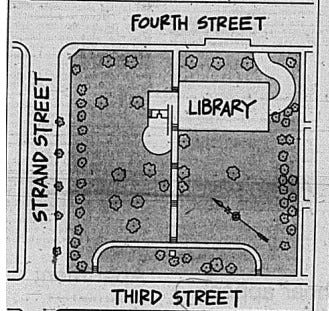The City landmarked Ocean Park Branch Library, opened in 1918, is the only Carnegie Library remaining in Santa Monica. Situated on the corner of Main Street and Ocean Park Boulevard, it has long been a focal point of community life in Ocean Park.
Carnegie1 donates funds for two libraries in Santa Monica. The first, the Main Library2 at 5th and Santa Monica, built in 1904, has since been replaced. The need for branch libraries3 is evident - as early as1906, there is a Santa Monica library book exchange located in the Clapp Brother’s Drug Store at 139 Pier Ave in Ocean Park.
Encouraged by City Librarian Elfie Mosse,4 Mayor (and President of the Library Board of Trustees) S.L. Berkley (1864 - 1936) writes to Carnegie requesting a grant to fund an Ocean Park branch library. In May 1916 Carnegie agrees to give $12,500. The City wants an up-to-date modern and convenient library branch that will be sort of a civic center as well as a library - so a central Ocean Park location is desired. Carnegie only provides funds for the building – not for the land or the operating expenses. The City is looking for a site for not more than $5,000 – with the City contributing $2,500 to be matched by Ocean Park residents.
In August 1916, a City appointed library committee selects 3 possible sites (in order of preference):
In October 1916, a meeting of Ocean Park residents, who are being asked to come up with matching funds for the site, vote in favor of a different site:
In December 1916, the City makes the final selection of the site:5
The City gets title to the property at the end of December 1916.6 In January 1917, the partnership of Frank T. Kegley7 and H. Scott Gerity is selected as architect. A modestly scaled building with a simplified variation of Classical Revival style is designed. In June 1917, all the construction bids come in above $12,500 - and have to be rejected.8 The project is value-engineered - the front brick wall is replaced with stucco covered hollow tile. With a bid of $12,500, William Kirk (1858 – 1930)9 is selected as the contractor. In July 1917, construction begins, and seven months later the Ocean Park Branch Library opens to the public on February 15, 1918.
In 1966, the City Manager says it is difficult to justify in a City the size of Santa Monica, the expense of having 3 branch libraries, and recommends that the Ocean Park branch be closed immediately and that patrons be bused to the Main Library.10
In May 1977, the Ocean Park Branch Library is declared a City historic landmark by the Santa Monica Landmarks Commission.
In 1978, plans are discussed to replace the 60-year-old Ocean Park branch library with a new building at Hotchkiss Park.11
In 1984, the local architectural firm Mayer / Taylor is hired to design an addition, and to add a new entrance with handicapped access. The original façade is retained during the major remodel and expansion.
Steel baron and philanthropist Andrew Carnegie (1835 - 1919) believed that public libraries were the key to self-improvement. Between 1886 and 1917, Carnegie financed the construction of 2,811 public libraries, most of which were in the United States. Carnegie required financial commitments for maintenance and operation from the town that received the donation. Carnegie required public support rather than making endowments because, as he wrote:
…. an endowed institution is liable to become the prey of a clique. The public ceases to take interest in it, or, rather, never acquires interest in it. The rule has been violated which requires the recipients to help themselves. Everything has been done for the community instead of its being only helped to help itself.
In 1903, Ida (Mrs. Joseph Higgins) Clark (1853 - 1917) writes to Carnegie asking for funding for a library building in Santa Monica. Carnegie provides $12,500. Within a short time, citizens raise $3,982.50 and purchase lots M and N of Block 144 on the NEC Santa Monica and 5th which they donate to the City. Construction begins in January 1904 and eight months later the Santa Monica library opens to the public in August 1904.
In 1927 the small Carnegie building is enlarged and remodeled into a Spanish-influenced design.
A new Main library, on the North East Corner (NEC) Santa Monica and 6th, opens in 1965, and the old 1927 Main Library is demolished in 1974.
Santa Monica has four branch libraries Ocean Park (1918), Fairview (1931), Montana (1952), and Pico (2014).
Elfie Asenath Mosse (1867 – 1939) - is appointed City Librarian in 1890. At the time, the library consists of two rooms in the Bank of Santa Monica building at Santa Monica and 3rd. For the first 14 years, until the new Carnegie Library opens in 1904, Mosse is the only staff. Mosse born in San Francisco, moves to Santa Monica in 1878 when her widowed mother re-marries. In 1878, her mother gifts Elfie and her sister, Alice Corrine Mosse (1870 - 1958), a lot in Santa Monica (lot M of Block 144) - later the site of the 1904 main library. Elfie is City Librarian from 1890 until her death in 1939.
In 1916, Ocean Park Boulevard only extends west from Lincoln Blvd to 4th St. In 1917, Ocean Park Blvd is extended from 4th to Main St. This creates a site for the Ocean Park Branch Library with street visibility on all four sides.
Since August 1916, Commissioner W.H. Carter (1879 - 1936) has advocated for this site on the South West Corner (SWC) Norman and 2nd (opposite Fire Station No. 2). The City proposes to acquire the 4 lots (lots 1 & 2 (on 2nd) and 29 & 30 (on Main) of Block Q of Santa Monica Commercial Tract) by condemnation.
Born in Iowa, Franklin Thompson “Frank” Kegley, Jr (1886 - 1962) graduates from the University of Illinois in 1908 and is licensed to practice architecture in California in 1910. In 1911 he marries in Ocean Park Maude E Beckon (1886 – 1971). In 1915 he enters into a short-lived partnership with Heath Scott Gerity (1885 - 1956), who had been an associate of Carlton Winslow. In 1918 Maude Kegley divorces Frank (Club Woman vs Architect in the Divorce Court - Los Angeles Times, 17 Apr 1918). In 1917 Kegley serves in the U.S. Army during WWI. In 1920 he marries Ouida A. Kegley (1884 – 1973). In 1923 Kegley returns to Chicago to work for Benjamin H. Marshall (1874 - 1944). When Marshall retires in 1938, Kegley becomes a partner with Walton. In 1942 in WWII, Kegley is commissioned into the Naval Reserve where he supervises the construction of the Chicago Bridge & Iron Company shipyard at Calumet Harbor during WWII. By 1944 he advances to the rank of Commander and is supervisor of shipbuilding. In 1952 Kegley returns to Los Angeles, and restarts his own independent architecture practice. In 1955 Kegley partners with James Westphall and Glenn Arbogast (1920 - 2010) to form Kegley, Westphall and Arbogast. The firm primarily designs shopping centers and commercial retail buildings in Los Angeles. The firm dissolves in 1960 at least partially due to Kegley’s retirement.
Works by Kegley include the McCall Residence (originally built in 1910 on 2nd Street in Santa Monica but moved in 1962 to 219 West Channel Road); St. Anthony's Catholic Church (Long Beach, 1913 - William Kirk contractor); Balguy Residence (Santa Monica, 1913); St. James Catholic Church (Redondo Beach, 1914); the Ocean Park Branch Library (Santa Monica, 1918), and Naval Air Station China Lake Chapel (1957).
The US enters World War I in April 1917 and the June 1917 bids for the library are higher than anticipated - in the $15,000 to $16,000 range. Under the conditions of the Carnegie gift, only the Carnegie $12,500 can be used for the construction of the building.
William Kirk (1858 – 1930). Born in Scotland, comes to the US in 1882. He is the contractor for several buildings in Chicago, IL. Kirk comes to Southern California in 1903 and is the contractor (with his son William W. Kirk (1880 – 1972) ) for several buildings including St. Anthony's Catholic Church (Long Beach, 1913) and the Ocean Park Branch Library (Santa Monica, 1918) - both with Frank T. Kegley as architect.
Perry Scott (1924 -2004), municipal finances expert and Santa Monica City Manager from 1964 to 1973, recommends that all 3 branch libraries be closed. Scott informs the Council that the annual cost of police, fire, and library operations exceeds the City’s total property tax revenue, and surplus funds have been depleted. The cost of busing branch patrons to the Main Library would be $40,000 / year which is one-third of the yearly cost of operating the 3 branch libraries. Also, the City would reap a substantial windfall from leasing or selling the 3 properties. The Friends of The Ocean Park Library is formed and collects over 1,000 signatures against the closing. The 1966 closure / busing plan is not implemented.



